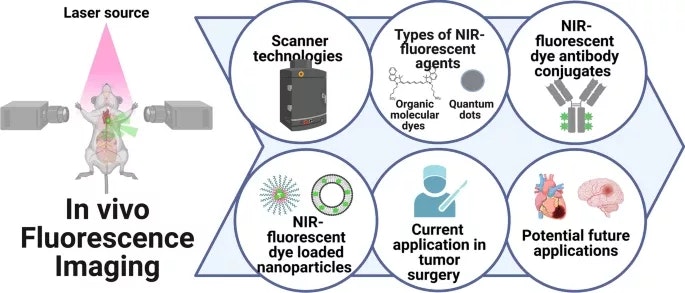Journal of Nanobiotechnology
- Préclinique
In vivo fluorescence imaging: success in preclinical imaging paves the way for clinical applications
Auteurs Ahmed Refaat, May Lin Yap, Geoffrey Pietersz, Aidan Patrick Garing Walsh, Johannes Zeller, Blanca del Rosal, Xiaowei Wang & Karlheinz Peter
Résumé
Abstract:
Advances in diagnostic imaging have provided unprecedented opportunities to detect diseases at early stages and with high reliability. Diagnostic imaging is also crucial to monitoring the progress or remission of disease and thus is often the central basis of therapeutic decision-making. Currently, several diagnostic imaging modalities (computed tomography, magnetic resonance imaging, and positron emission tomography, among others) are routinely used in clinics and present their own advantages and limitations. In vivo near-infrared (NIR) fluorescence imaging has recently emerged as an attractive imaging modality combining low cost, high sensitivity, and relative safety. As a preclinical tool, it can be used to investigate disease mechanisms and for testing novel diagnostics and therapeutics prior to their clinical use. However, the limited depth of tissue penetration is a major challenge to efficient clinical use. Therefore, the current clinical use of fluorescence imaging is limited to a few applications such as image-guided surgery on tumors and retinal angiography, using FDA-approved dyes. Progress in fluorophore development and NIR imaging technologies holds promise to extend their clinical application to oncology, cardiovascular diseases, plastic surgery, and brain imaging, among others. Nanotechnology is expected to revolutionize diagnostic in vivo fluorescence imaging through targeted delivery of NIR fluorescent probes using antibody conjugation. In this review, we discuss the latest advances in in vivo fluorescence imaging technologies, NIR fluorescent probes, and current and future clinical applications.

